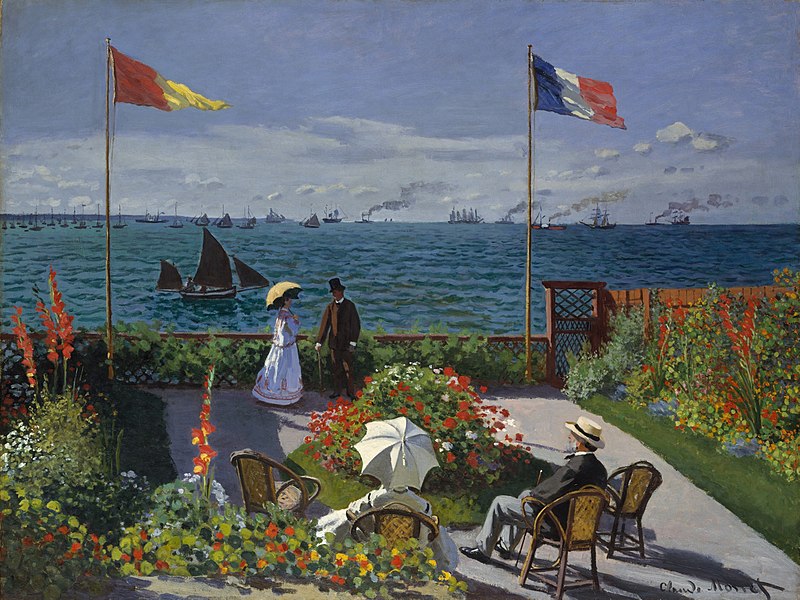Impressionism, if to be defined in a line, is like painting the view from the open window of a running train, rushing through a long sunny poppy field.
It is always there but changing.
The beauty of impressionism lies in its rawness and ambiguity. An impression art doesn’t have the touch of an art studio, every layer is painted over another without waiting for the lower layer to dry completely. Brushstrokes are loose, spontaneous and rough. As if the artist wants you to feel the texture of every paint on the canvas.

Bridge at Argenteuil 1874
Claude Monet
When other artists were busy putting realism into their paintings, trying to hide every brushstroke and sometimes even toning down the colour. Impressionists painted how they wanted to. They used bright colour and added a lot of open space in their art. ‘Bridge at Argenteuil’ is a beautiful example of impressionism. It shows the use of bright, complementary colours. the vastness of the sky, angle of the shadows, visible small brush strokes and more importantly the subject is of a landscape, which was highly criticized by the art academy at that time. The characteristics of impressionism are further discussed below.
Where did Impressionism start?
Before the 20th century, the French Academy has mainly focussed on Roman colossal and Greek Gods and in general painting the history, some artists were more interested in painting the present. They loved landscapes and everyday life more than battle scenes.
In the early 1860s of Paris, Claude Monet, Pierre-Auguste Renoir, Frederic Bazille and Alfred Sisley ventured into the world of commoners and started the impressionist movement. They would go out in the open and paint scenes of the countryside with little to no work in the studios. They started using synthetic colours and would paint in sunlight directly from nature. The subject of their art was often common people and contemporary life.

Sunrise / Soleil Levant 1872
Claude Monet
They also had to face huge rejection from the pompous Academy. Their works were often rejected and when they were displayed in ‘Salon des Refuses’, many visited but only to mock. One such person was Louis Leroy. He described Monet’s Sunrise as ‘Impression’ and in a rather mocking tone added
‘Wallpaper in its embryonic state is more finished than that seascape’.
The word impression was soon accepted by both artists and critics.
Characteristics of Impressionism.
To study the characteristics of impressionism we will divide the art into two broad categories, Style and Subject.
Style –
- Impression arts were done in the open, in nature using sunlight as the only source of light. This forced the artists to complete the painting within a limited time frame which led to the use of small loose brushstrokes and little to no mixing. A wet layer of paint applied over another wet layer.

Woman with a parasol 1875
Claude Monet
- When it comes to colour, impressionists preferred synthetic and bright colours, they also started the use of complementary colour palette in paintings. One should notice that a true impressionist refrained from using black colour
- Importance of light was probably the most crucial thing in this style of art. They emphasised on accurate depiction of light. When impressionists couldn’t complete their painting within a day they would wait for the lighting to be the same on a different day to continue their painting. Light and shadows played an important role to show the passage of time in impressionism.
To learn more about the characteristics of impressionism click here.
Subject –
Impressionists used everyday life, common folk and nature as their subject. As the first few impressionists were Parisian, Paris itself became a subject for many impression arts.
This slideshow shows the main three subjects of impressionism.
Post Impressionism
The impressionism movement was further carried into the 1880s as post-impressionism and was made famous by artists like Vincent van Gogh, Paul Gauguin. Original young impressionists like Paul Cezanne were also a part of post-impressionism.



